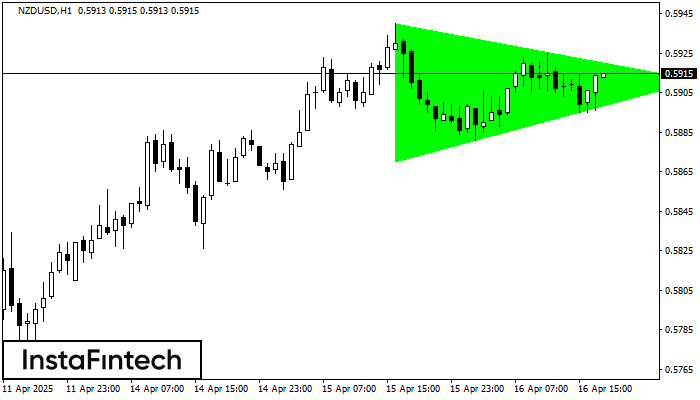Bullish Symmetrical Triangle
was formed on 16.04 at 17:01:05 (UTC+0)
signal strength 4 of 5

According to the chart of H1, NZDUSD formed the Bullish Symmetrical Triangle pattern, which signals the trend will continue. Description. The upper border of the pattern touches the coordinates 0.5940/0.5911 whereas the lower border goes across 0.5870/0.5911. The pattern width is measured on the chart at 70 pips. If the Bullish Symmetrical Triangle pattern is in progress during the upward trend, this indicates the current trend will go on. In case 0.5911 is broken, the price could continue its move toward 0.5951.
Figure
Instrument
Timeframe
Trend
Signal Strength







